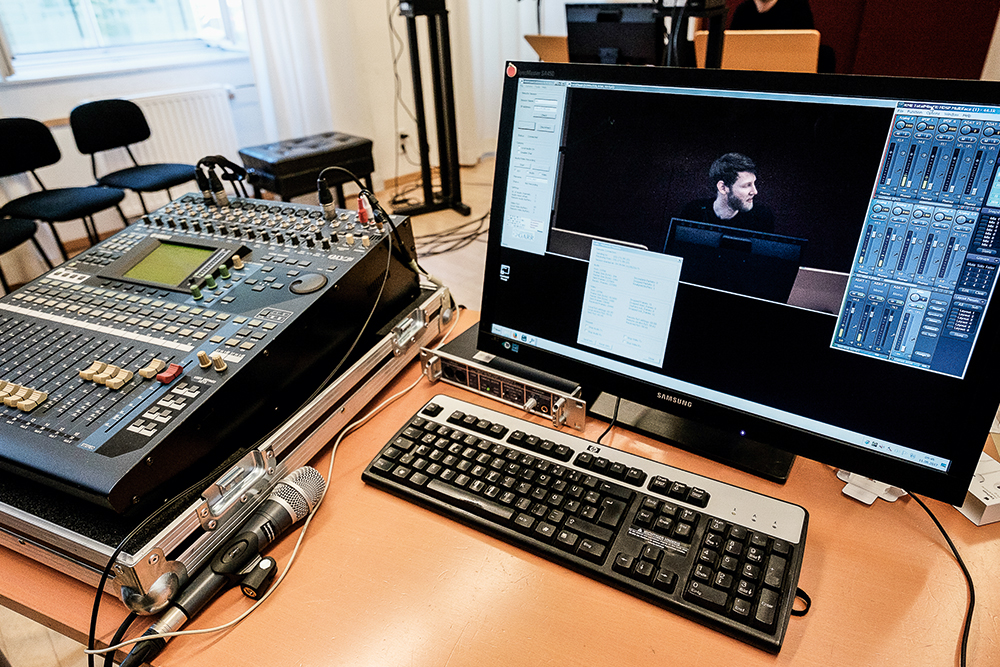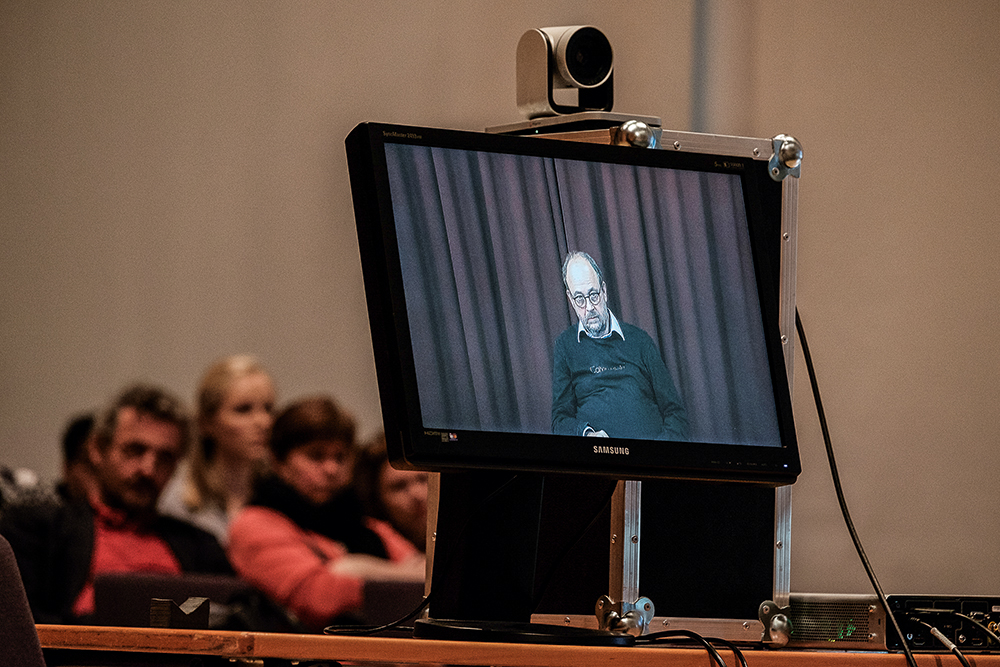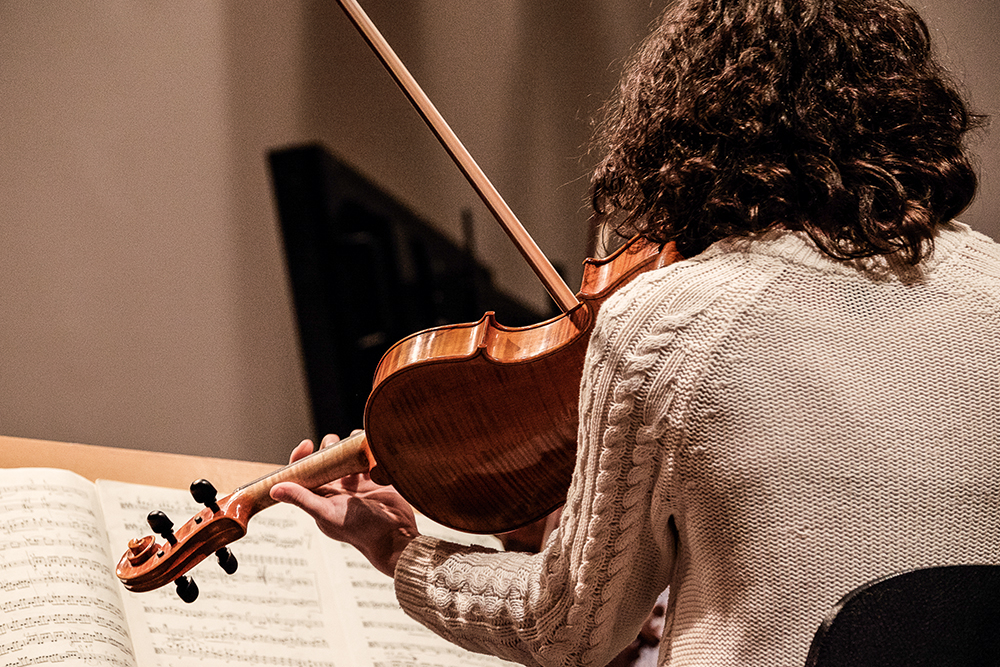The idea that teachers and students don’t need to be in the same room for lessons is not new: for a while now, distance learning via the Internet has enabled students to take advantage of learning opportunities no matter where they happen to be. Lectures (on theoretical coursework, for instance) can be streamed by students on laptops from the comfort of home, with the added advantage that the individual teaching units can be watched several times—which is extremely conducive to better understanding.

In specifically artistic training, however, distance learning is a more direct affair: it’s about immediately responding to or implementing something you’ve just heard or been shown. So the important thing in such lessons is having a technical system that provides the best possible transmission of the sound and the fine points of artistic expressivity. Teachers need to be able to hear and see the students as clearly as possible via the audio and video system in order to be able to give them precise instructions and recommendations. And a special technical challenge comes in the form of concerts in which the musicians play together from different locations, connected via audio and video, with the audience seeing and hearing part of the ensemble via a technical medium.
“The objective is to get the most authentic possible impression and transmit in the best possible quality,” says Thomas Lang, head of the mdw’s Audio and Video Centre, where they’ve already spent years working together with the mdw’s Central Computing Service on the technical underpinnings of distance learning at the university. The streaming system used here is called LOLA which stands for “low-latency”. The LOLA system keeps the time lag in audio and video transmission low enough (at a mere 9–18 milliseconds) that it’s possible for musicians in different places to play together live.
For musicians, using this technology entails some new aspects that may take a bit of getting used to. Wearing headphones and playing into a microphone can feel strange at first. And contact via headphones and the screen isn’t quite as direct as one might like when it comes to eye contact and getting a good sense of the others’ breathing. So the LOLA system isn’t a true replacement for non-virtual teaching and concert situations. But replacement isn’t the idea, here. This technology is being used simply as an additional means of artistic exchange, one that can give rise to new international collaborative projects between arts universities.

One of these projects is being realised this December by the mdw and the Royal College of Music London. Students of both universities are set to play two concerts together, each time connected via the LOLA system. At “Vienna Calling” on 10 December, to be presented at the at the Royal College of Music, some of the musicians will play in front of the audience in London while the others, located at the mdw, will play together with them. And on 13 December, “London Calling”—a mirror-image of the first concert—will take place before a live audience in the mdw’s Joseph Haydn-Saal. Prior to these performances, the students will rehearse together online. Another special feature of this project is that composition students from both universities have composed works that specifically take into account such use of audio and video technologies. “There’s a real stage and a virtual one,” says Johannes Kretz, head of the Department of Composition, Electroacoustics, and Tonmeister Education at the mdw. These pieces are written so as to make clear how part of the music is coming from a distance and reaching the audience via loudspeakers and screens. The effect should be to enrich a real concert situation by adding a virtual level that becomes a thematic focus in its own right.
One reason why Johannes Kretz is so enthusiastic about this project is that he’s himself rather fond of making music over the Internet: Kretz used to be part of an “Internet band” whose members connected with each other via the Internet and gave concerts in various places with some of them always being present just virtually. This mode of performing brings with it the great bonus of inclusion: musicians who are unable to travel to rehearsals or concerts for financial reasons or lack of time can get in on the action in virtual form. But even so, traveling is still extremely important for artists and their creative work, and it can’t really be replaced by digital information and virtual participation. “Music consists not just of notes and sound, but also of peripheral information like body language and perception of the overall context,” emphasises Kretz.
For students, distance learning can be a source of valuable enrichment. Big-name artists with full calendars, with whom it’s often difficult to get a lesson, can be more easily persuaded to take a few hours of their time for an online master class than to travel a long way to teach on location.
Johannes Meissl, head of the Joseph Haydn Department of Chamber Music, Early Music, and Contemporary Music, has also had good experiences with distance projects: “After just a few minutes, it seemed to me like a normal teaching situation—despite the headphones and the screen,” says Meissl of his first distance coaching session at the mdw with a viola student in Miami. So before you have no contact at all, he thinks, this kind of teaching can be a form of enrichment that makes sense: “For me, distance learning isn’t a categorical either-or question,” he adds. After all, it’s fundamentally about using this technology to gather new experiences. Students are relatively open to distance projects, and successful pilot projects can convince instructors, as well.

As mentioned, such distance projects support international networking between universities. In June 2016, the mdw realised a LOLA project together with the Conservatorio di Musica “Giuseppe Tartini” in Trieste. A further important project partner for the mdw is the Royal Danish Academy of Music, and similar cooperative efforts are being planned together with the Manhattan School of Music and the Shanghai Conservatory of Music. The creation of new distance projects also serves to help refine the technologies being used. “What we’re doing is testing the limits of what’s technically possible,” emphasises Thomas Lang. The central question is how to keep musicians from being distracted by the technical means being used while they’re playing. Particularly for violinists and violists—which is to say: for musicians whose sound originates close to the ear—the in-ear headphones used shouldn’t have a detrimental effect on tone production.
So the job for people on the technological side is to develop equipment that will allow musicians to play undisturbed and eventually enable them to hear each other as if from specific positions in space. In the future, head-mounted displays will also be a topic, but such systems’ user-friendliness still needs to be optimised. Altogether, there are still a great many fronts on which distance projects might continue developing. One thing is clear: streaming systems are incapable of letting you feel a teacher’s charisma, perceive motion within a space, and hear the pure, unadulterated sound of voices and instruments to the fullest possible extent. But even so, they do offer a new sort of experience that can be of added benefit in realising your own artistic personality and abilities. And for audiences, they open up a whole new plane—because in times of digitisation, the virtual realm is indeed one that can play a fruitful role in the concert hall as long as it’s viewed as a place of mutual encounter and enrichment rather than as a displacement of tradition.

